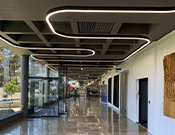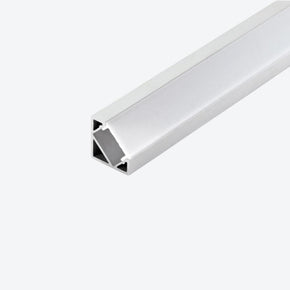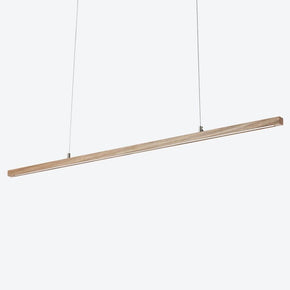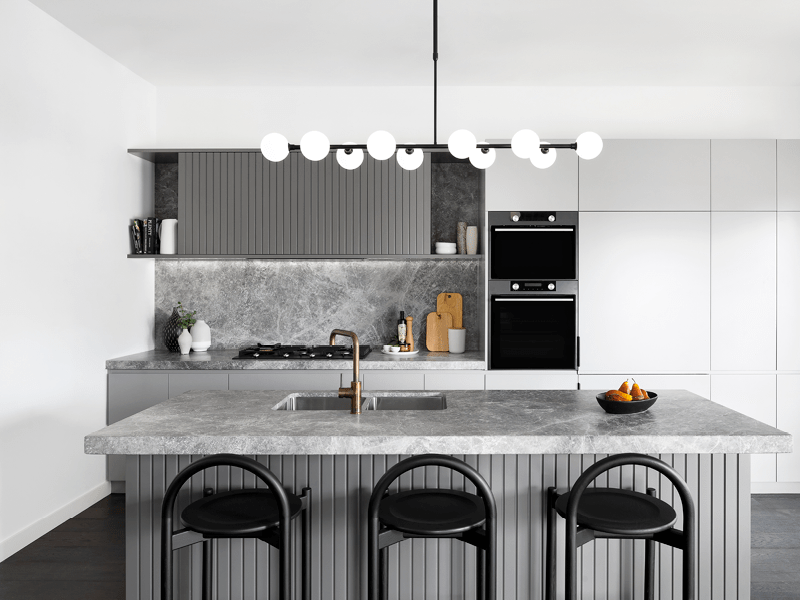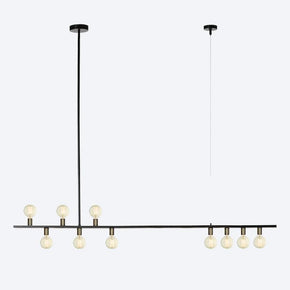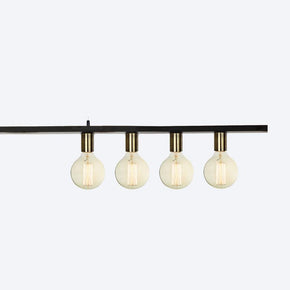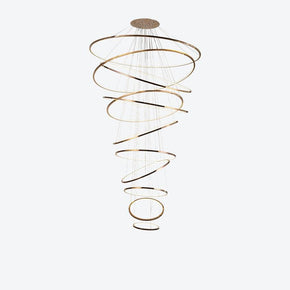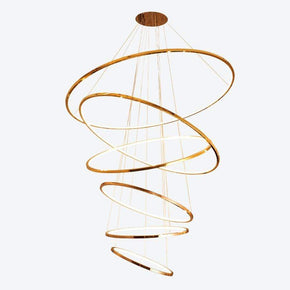- No products in the cart.
- ``
A Guide to High Ceiling Lighting
24
Mar
If you read our previous article on the best lighting for your ceiling type, you’ll know that choosing the perfect lighting fixture is not a simple job. What might work for one ceiling, may diminish the lighting potential of another.
With high ceilings becoming a more popular choice in architecture, we decided to pull together a guide on how you can accentuate your ceiling to enhance your space and maximise brightness with the best lighting for high ceilings.
1. Globes
Long-lasting
Changing a globe on any ceiling usually requires a ladder. But the higher the ceiling, the more dangerous it is to change over the globe or fixture. That being said, opt for a globe that is long-lasting to avoid frequent changes.
LED lights are the best choice of globe if you’re after something long-lasting and energy-efficient, with the average lifespan being around 50,000 hours - equalling almost six years if left on 24/7!
Lumens
Considering you have a large space to fill, you want your globe to be as bright as possible. Lumens is the measure of brightness or light output, so in this instance, you want a globe with a higher lumen count.
Kelvins
Kelvin refers to the colour appearance of a globe, and measures how warm (yellow-toned) or cool (blue-toned) a source of light is. While the scale ranges from about 1,000K for very warm light, up to 10,000K for the coolest tone, the majority of LEDs are produced to be either 2700k, 3000k, 4000k or 5000k.
In this instance, selecting a globe with Kelvins around 3000 to 4000 will give you a more bright and neutral tone, perfect for enhancing the space and making the room feel bigger.
Dimmable
A dimmable light is a great option for consistent versatility, giving you options at different times of the day and in different seasons when natural lighting varies. For example, you may want maximised lighting while you’re reading a book, or perhaps something more subtle for a romantic dinner.
Dimmers are essential for creating a mood, and with a high ceiling, the flexibility or brightness will be an entertainer’s best friend.
2. Downlights / recessed lighting
Otherwise known as recessed lighting, downlights are mounted inside your ceiling. Downlighting is great for tasks, highlighting a certain feature in your room, or alternatively, filling a large space with light if you install several in a row.
Downlights for high ceilings are a sleek and sophisticated option, especially if you don’t want to take away the attention from a statement light or feature in the room. In relation to high ceilings, there are multiple factors to consider with your downlighting.
Narrow beam
A narrow beam gives you more concentrated light, in contrast to a wider beam. While wider beams cover a wider area, they’re not as intense and in a large room with high ceilings, can be too soft.
Narrow beam lights, on the other hand, allow for light that reaches the floor and maximises brightness. Ideally, you will need a few lights installed with a spread of less than 50 degrees.
Distance for walls
Ensuring that your downlights aren’t placed too far away from walls is another great way to maximise the light in your room. Ideally, you want to highlight the top part of the wall to accentuate the height of the ceiling. This will make the room feel more spacious, as lighting too far from the walls can make it feel like a cave.
Reflector trim
Different types of trims on downlights can help you to soften or intensify the light, depending on the mood you want to create.
In a larger space, a reflector trim is a great addition to your downlights, as they will help maximise the light in a specific area. Particularly with high ceilings, a stronger light beam is needed to optimise brightness.

3. Placement
To have sufficient light throughout the whole room, you want your lights spaced evenly across the whole ceiling. You want to especially make sure that you have lighting over areas that are needed for tasks, with the light placed in front of the task area to minimise shadows.
If you have a feature pendant or chandelier, place downlights evenly around it to centralise the statement piece and optimise the wow factor your room creates.
4. Pendant lights
If you’re lucky enough to have high ceilings, there’s never been a better excuse for installing pendant lights. Not only is this a great way to up your interior design game, but pendant lights for high ceilings are a sophisticated way to optimise light in your space while adding a wow factor.
Ensure you take into account the room size, as the larger the room, the bigger the pendant light should be. You don’t want pendant lights that are too small for your space, as the proportions will feel very “off,” and it will end up diminishing the potential of light. The ideal positioning is about one third down from the ceiling. This helps to fill the space and ensure it doesn’t feel void, both adding warmth and acting as a statement.
Overall, we think that carefully selected and placed pendant lights, might just be the best lighting for high ceilings…
5. Rule of thirds
Using the rule of thirds when choosing high ceiling lighting is an essential technique used to improve interior design composition. If you imagine the wall is split into three equal parts - the top, middle and bottom, these become your design levels.
To create the perfect balance, you want to place lighting in each third of the room, especially if you have a high ceiling. With your ceiling lights filling the top level, you can add low pendants or tall floor lamps to enhance the middle third, and table lamps to fill the lowest. Applying the rule of thirds is a great way to make the room more aesthetically pleasing and visually interesting.
Still need some help?
If you need advice on which lighting solutions can complement your home, get in touch with the About Space team. We can guide you through picking the perfect high ceiling lighting to transform your space. You can also shop our full range here.






